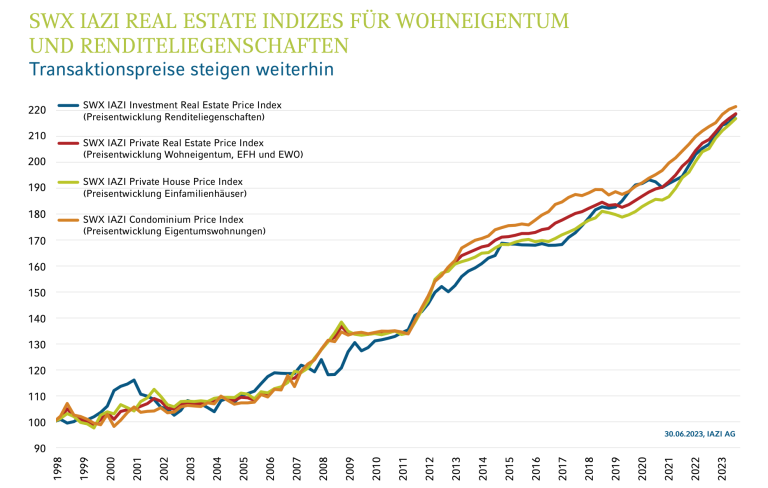The Swiss National Bank’s decision on 20 June to lower the key interest rate again by 0.25 percent to 1.25 percent has surprised some market observers. This can be deduced from the development of the foreign exchange market, writes avobis in its latest assessment of the interest rate market. However, in view of the continuing positive inflation trend, there is scope for a further easing of monetary policy over the course of the year, depending on the development of the economy and inflation.

Sources: Bloomberg, UBS Switzerland AG; values up to and including 2010 are based on Libor and from 2011 onwards on SARON. The effective interest rate of the product is calculated from the margin + compounded SARON of the respective accounting period. For the calculation of the interest rate, the compounded SARON can never be less than zero.
UBS also writes in its medium-term interest rate forecast: “Although the SNB has surprised the markets and economists with the timing of its interest rate cuts from time to time in recent quarters, we still assume that key interest rates will remain at 1 percent in the medium term. The SNB should then classify this interest rate as neutral – neither stimulating nor restrictive for the economy – to complete the rate-cutting cycle.” The bank continues: “A significant change in long-term mortgage interest rates is often linked to a major shift in the medium-term outlook for key interest rates, which we do not expect to occur in the next 12 months. Mortgage interest rates linked to SARON, on the other hand, are likely to benefit from the anticipated key interest rate cuts in the coming quarters.” UBS therefore estimates that the SARON interest rate as the basis for variable-rate mortgages is likely to fall to 1 per cent in the course of 2024 and level off at this level in the following years.

With each monetary policy assessment, the SNB publishes its conditional inflation forecast, which is based on various assumptions and certain input parameters. This forecast is only valid until the next quarter. The deviation from actual inflation makes it possible to judge how accurate the forecasts were and whether they were cautious or optimistic. Source: Data from the Federal Statistical Office, SNB, 20.06.2024
According to avobis, the SNB is currently apparently valuing the economic benefits of an easing of monetary policy more highly than the benefits of stronger disinflation. avobis therefore also believes that there is still room for further interest rate cuts if inflationary pressure eases more than the SNB is forecasting.


